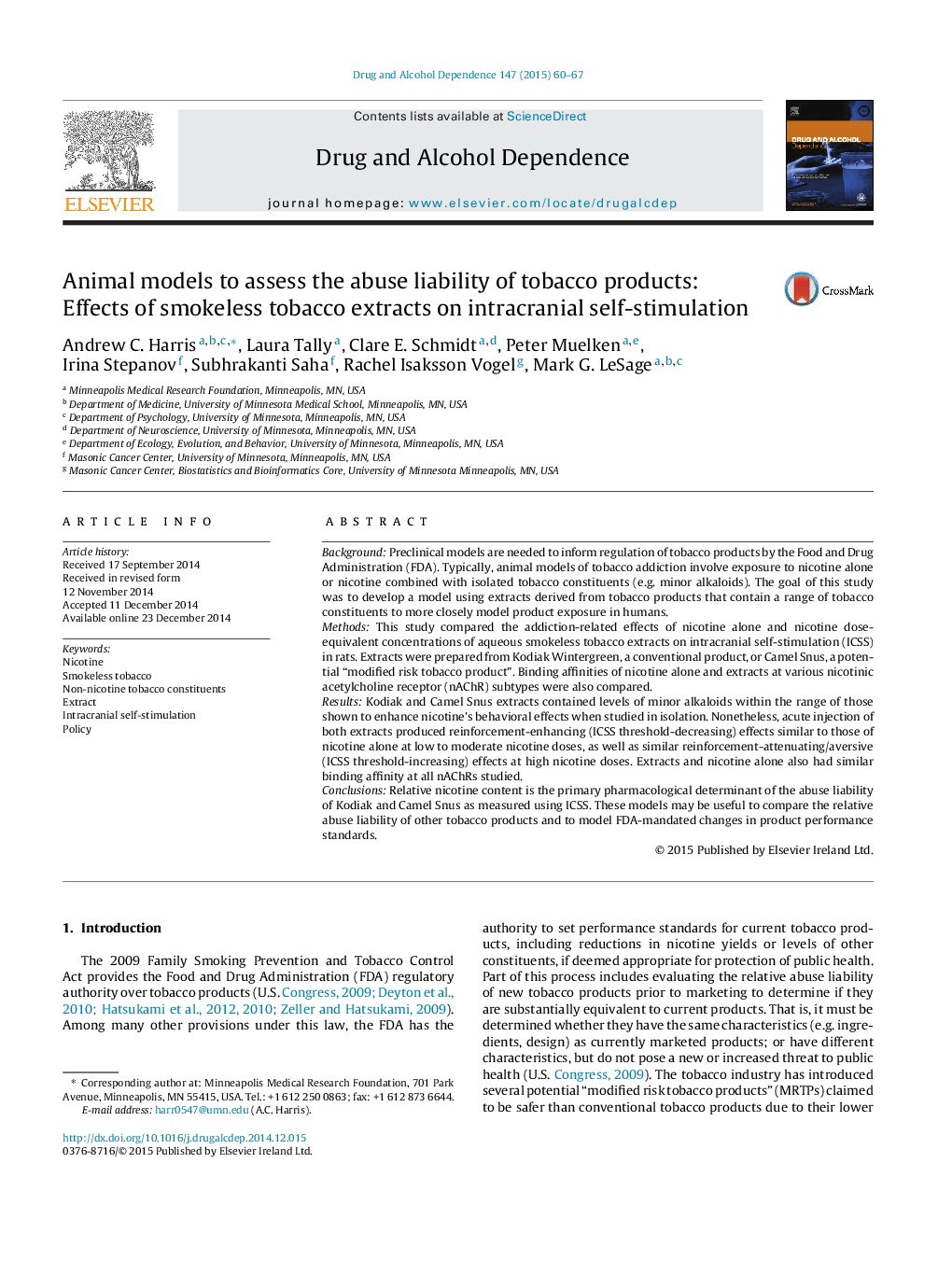| کد مقاله | کد نشریه | سال انتشار | مقاله انگلیسی | نسخه تمام متن |
|---|---|---|---|---|
| 1069871 | 1486144 | 2015 | 8 صفحه PDF | دانلود رایگان |
BackgroundPreclinical models are needed to inform regulation of tobacco products by the Food and Drug Administration (FDA). Typically, animal models of tobacco addiction involve exposure to nicotine alone or nicotine combined with isolated tobacco constituents (e.g. minor alkaloids). The goal of this study was to develop a model using extracts derived from tobacco products that contain a range of tobacco constituents to more closely model product exposure in humans.MethodsThis study compared the addiction-related effects of nicotine alone and nicotine dose-equivalent concentrations of aqueous smokeless tobacco extracts on intracranial self-stimulation (ICSS) in rats. Extracts were prepared from Kodiak Wintergreen, a conventional product, or Camel Snus, a potential “modified risk tobacco product”. Binding affinities of nicotine alone and extracts at various nicotinic acetylcholine receptor (nAChR) subtypes were also compared.ResultsKodiak and Camel Snus extracts contained levels of minor alkaloids within the range of those shown to enhance nicotine's behavioral effects when studied in isolation. Nonetheless, acute injection of both extracts produced reinforcement-enhancing (ICSS threshold-decreasing) effects similar to those of nicotine alone at low to moderate nicotine doses, as well as similar reinforcement-attenuating/aversive (ICSS threshold-increasing) effects at high nicotine doses. Extracts and nicotine alone also had similar binding affinity at all nAChRs studied.ConclusionsRelative nicotine content is the primary pharmacological determinant of the abuse liability of Kodiak and Camel Snus as measured using ICSS. These models may be useful to compare the relative abuse liability of other tobacco products and to model FDA-mandated changes in product performance standards.
Journal: Drug and Alcohol Dependence - Volume 147, 1 February 2015, Pages 60–67
